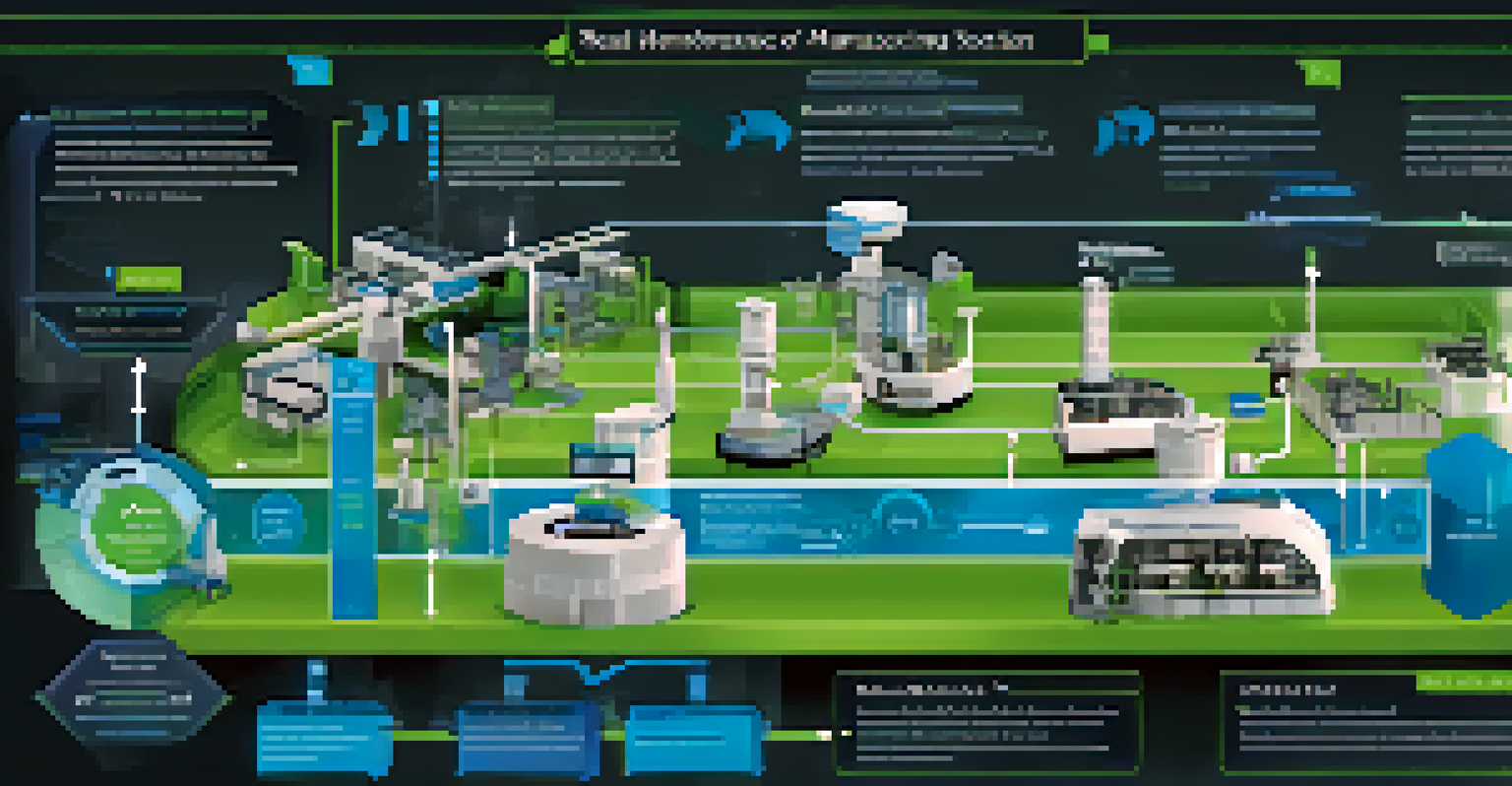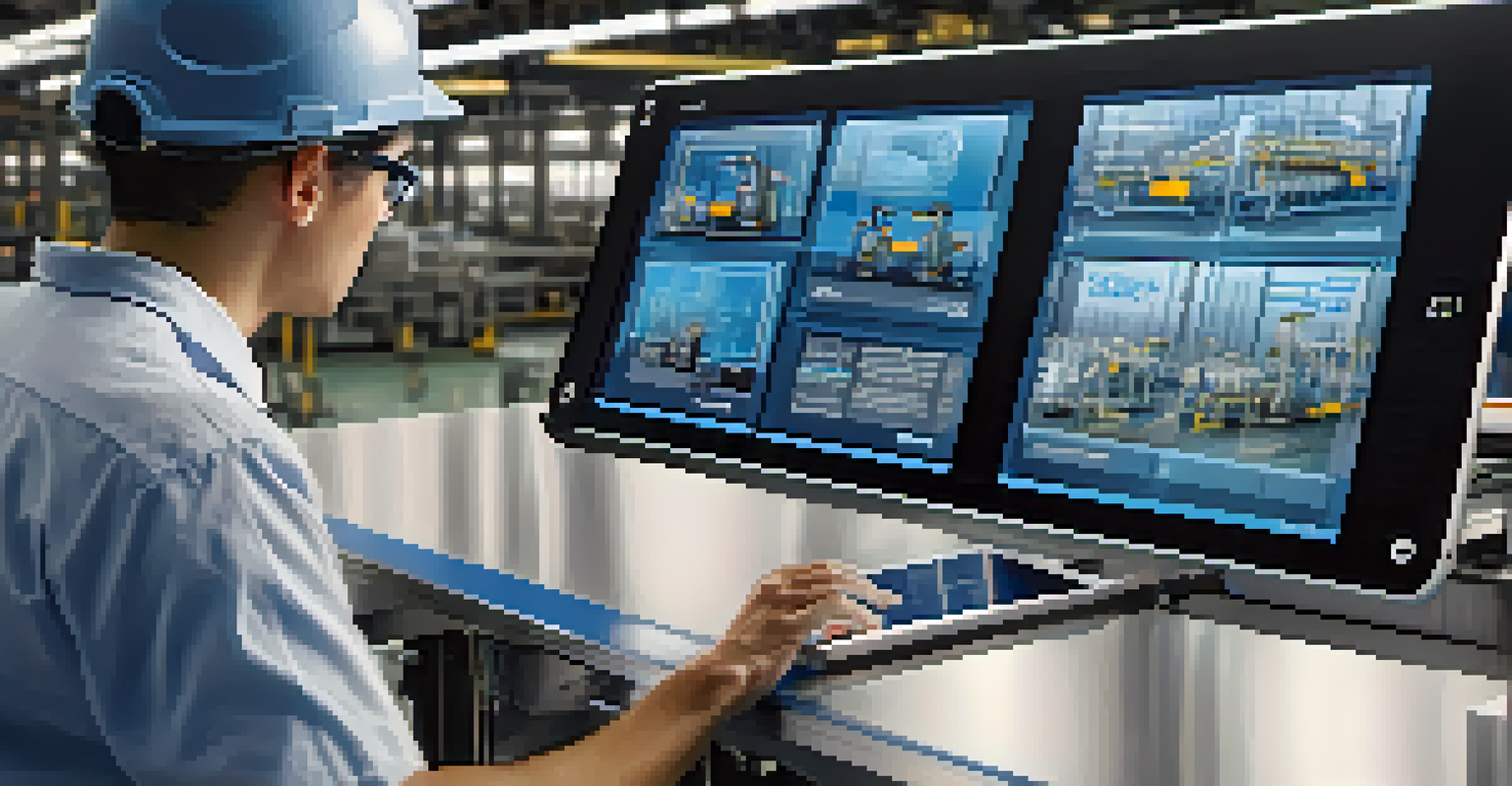The Economics of Digital Twin Adoption in Manufacturing

What is a Digital Twin and Its Role in Manufacturing?
A digital twin is a virtual representation of a physical asset, process, or system, allowing manufacturers to simulate and analyze real-time performance. Think of it as a digital replica that mimics the behavior of its physical counterpart, providing valuable insights into its operation. This technology serves as a bridge between the physical and digital worlds, making it an essential tool in modern manufacturing.
The greatest danger in times of turbulence is not the turbulence; it is to act with yesterday's logic.
By utilizing digital twins, manufacturers can monitor equipment health, predict failures, and optimize operations without disrupting production. For instance, if a factory uses a digital twin of its assembly line, it can identify bottlenecks and streamline processes more effectively. This proactive approach not only saves time but also reduces costs associated with downtime and inefficiency.
Moreover, digital twins enable manufacturers to test scenarios and implement changes in a risk-free environment. This means they can explore what-if situations, such as adjusting production schedules or experimenting with new materials, without the fear of real-world consequences. Ultimately, this fosters innovation and agility in an industry that demands constant evolution.
Economic Benefits of Adopting Digital Twins
The adoption of digital twin technology brings significant economic benefits, primarily through cost savings and increased efficiency. By predicting equipment failures before they occur, manufacturers can minimize unexpected downtime, which is often one of the most expensive issues in production. This predictive maintenance approach can dramatically reduce maintenance costs and extend the life of machinery.

Additionally, digital twins can enhance resource management, allowing businesses to optimize resource allocation, from raw materials to manpower. For example, a manufacturer can analyze data from their digital twin to ensure they are not overproducing or wasting materials. This not only cuts costs but also promotes sustainability—an increasingly important factor in today’s economy.
Digital Twins Enhance Manufacturing
Digital twins create virtual models that help manufacturers optimize performance and predict equipment failures.
Furthermore, improved product quality is another financial advantage. With real-time feedback and simulations, manufacturers can make adjustments during production, leading to higher-quality outputs. This quality improvement translates to fewer returns and higher customer satisfaction, ultimately boosting profits and market reputation.
Initial Investment and Implementation Costs
While the benefits of digital twins are clear, the initial costs of implementation can be daunting for many manufacturers. Developing a digital twin requires investment in technology, software, and often, training for staff to adapt to new systems. This upfront financial commitment can be a barrier, particularly for smaller manufacturers with limited budgets.
Innovation distinguishes between a leader and a follower.
Moreover, integrating digital twins into existing manufacturing processes may require significant changes to infrastructure and workflows. Companies must evaluate their current systems and make adjustments to fully leverage the capabilities of digital twin technology. This transitional phase can be time-consuming and may generate temporary disruptions in production.
However, it's important to view these costs as an investment rather than a mere expense. By taking a long-term perspective, manufacturers can understand that the eventual savings and efficiency gains from digital twin adoption often outweigh the initial financial outlay. A strategic approach to implementation can help in maximizing the return on investment.
Return on Investment (ROI) from Digital Twin Adoption
Calculating the return on investment (ROI) from digital twin adoption involves assessing both tangible and intangible benefits. Tangible benefits include reduced maintenance costs, lower material waste, and improved production efficiency, all of which contribute directly to the bottom line. Intangible benefits, such as enhanced decision-making capabilities and greater innovation, also play a crucial role in overall business success.
To accurately measure ROI, manufacturers should track performance metrics before and after implementing digital twins. For instance, a company might monitor machine uptime and production output to quantify improvements. This data-driven approach not only highlights the effectiveness of digital twins but also builds a compelling case for further investments in digital technologies.
Cost Savings from Digital Twins
Adopting digital twins can lead to significant cost reductions through predictive maintenance and improved resource management.
Furthermore, as digital twins continue to evolve, their potential impact on ROI is likely to grow. With advancements in artificial intelligence and machine learning, these virtual models will become even more predictive and insightful. Thus, early adopters who invest in digital twins today may find themselves at a significant competitive advantage in the future.
Challenges in Digital Twin Adoption and Overcoming Them
Despite the clear advantages, manufacturers face several challenges when adopting digital twin technology. One of the primary hurdles is the complexity of data integration from various sources, including sensors, equipment, and existing software systems. Ensuring that all this data communicates effectively is vital for the digital twin to function efficiently.
Another challenge is the need for skilled personnel who can manage and analyze the data generated by digital twins. Many organizations struggle to find employees with the necessary expertise in data analytics and digital technologies. Investing in training programs or partnering with tech companies can help bridge this skills gap and ensure a smoother transition.
Lastly, addressing concerns around cybersecurity is crucial, as digital twins often rely on cloud-based platforms for data storage and processing. Manufacturers must implement robust security measures to protect sensitive information. By proactively tackling these challenges, businesses can pave the way for successful digital twin integration.
Future Trends in Digital Twin Technology and Manufacturing
Looking ahead, the future of digital twin technology in manufacturing promises exciting developments. As industries increasingly adopt Internet of Things (IoT) devices, digital twins will have access to a wealth of real-time data, enhancing their predictive capabilities. This integration will lead to smarter manufacturing processes, capable of self-optimization and autonomous decision-making.
Moreover, advancements in artificial intelligence and machine learning will enable digital twins to provide even deeper insights. These technologies will allow for more sophisticated simulations and anomaly detection, empowering manufacturers to act quickly and efficiently. Consequently, businesses that embrace these innovations will likely gain a competitive edge in their markets.
Future of Manufacturing is Digital
The integration of digital twins with AI and IoT will drive smarter, more sustainable manufacturing practices.
Additionally, the growing focus on sustainability will drive the evolution of digital twins. Manufacturers will utilize these tools to optimize energy consumption, reduce emissions, and improve overall sustainability practices. As environmental concerns continue to rise, leveraging digital twin technology will not only be an economic driver but also a vital component of responsible manufacturing.
Conclusion: The Importance of Embracing Digital Twins
Embracing digital twin technology represents a pivotal shift in the manufacturing landscape. The economic benefits, including cost savings, efficiency improvements, and enhanced product quality, make a compelling case for adoption. As businesses strive to remain competitive, digital twins provide the tools necessary to innovate and adapt in a rapidly changing environment.
While challenges exist, they are not insurmountable. With careful planning, investment in training, and a focus on data integration, manufacturers can successfully navigate the transition to digital twins. The long-term advantages, including improved ROI and sustainability, far outweigh the initial hurdles.

Ultimately, the journey towards digital twin adoption is not just about technology; it's about reimagining the future of manufacturing. Companies that take the leap will position themselves at the forefront of innovation, ready to tackle the challenges of tomorrow with confidence.